Latest news about Bitcoin and all cryptocurrencies. Your daily crypto news habit.
Why do we get attached to our ideas and how to stay unbiased along the way? Predict the success and commercial feasibility of your idea by seeking for the disconfirming evidence. Fail fast or reach the stars!
Most of my A-HA moments happen early in the morning. Ideas are popping into my head and I have to write them down or they will be gone with the synaptic spark.
But what happens after I write them down?
Confirmation bias
Each idea evolves as the time passes by. The more you think about the idea the more emotionally involved you get. That is a fact. No matter how open-minded you are, a different opinion about the feasibility of the idea starts to hurt your feelings and you take it personally.
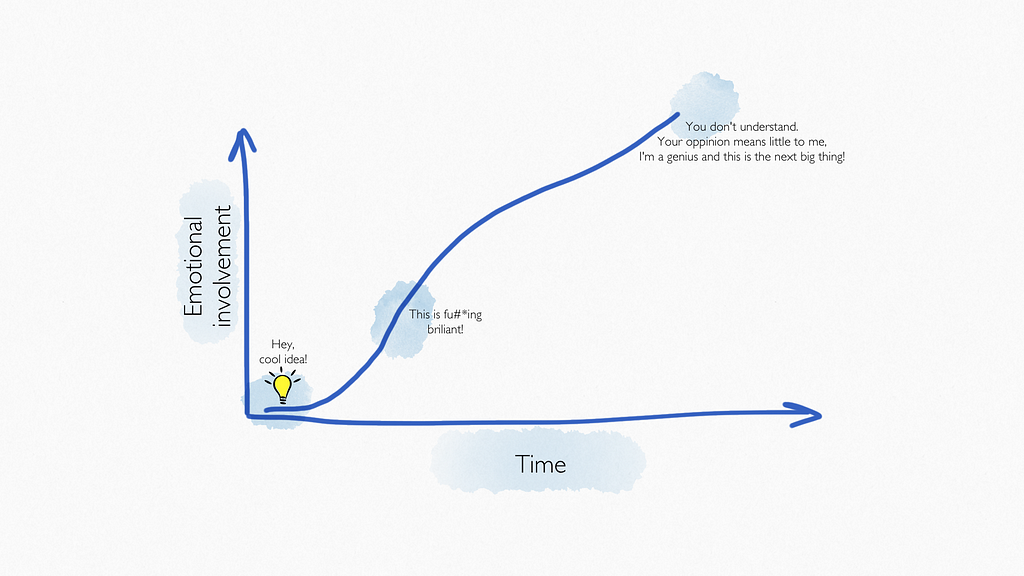 As the time passes by, emotional involvement with the idea gets stronger
As the time passes by, emotional involvement with the idea gets stronger
This is called confirmation bias. It is our tendency to cherry-pick information that confirms our existing beliefs or ideas. The bias can be so strong that two people with an opposed opinion can see the same evidence and feel that their idea is validated by it. But in order to progress, be brutally honest to yourself and seek for disconfirming evidence.
Disconfirming evidence — evidence that proves your existing ideas wrong — this is exponentially more valuable than confirming evidence.
This is the same as a negative feedback, taken as a constructive criticism. You are now probably wondering why should you bet against your own idea. Well, if you try really hard to prove it wrong and fail to do so, than the idea just might turn into something real and valuable.
How to do that by yourself? Read on…
Disconfirming evidence
The best way to validate an idea is to build whatever you want to build. Execution is key, and actual hard work is what really counts.
“Ideas are s*it, execution is the game” — Gary Vaynerchuk
Build that prototype, write that book you had in mind for years or setup your dropshipping store. Work like crazy for months and implement your idea. As the time passes by, the reality and the market will validate the idea. If it's bad, the world around will smack you between your eyes with a giant hammer. Smack! Then you realize that you've wasted a couple months for nothing.
Wait, wait… there has to be a better way to validate my idea. There is. This is exactly what I wanted to avoid. Instead of spending months of your time, imagine a scenario where you already built everything.
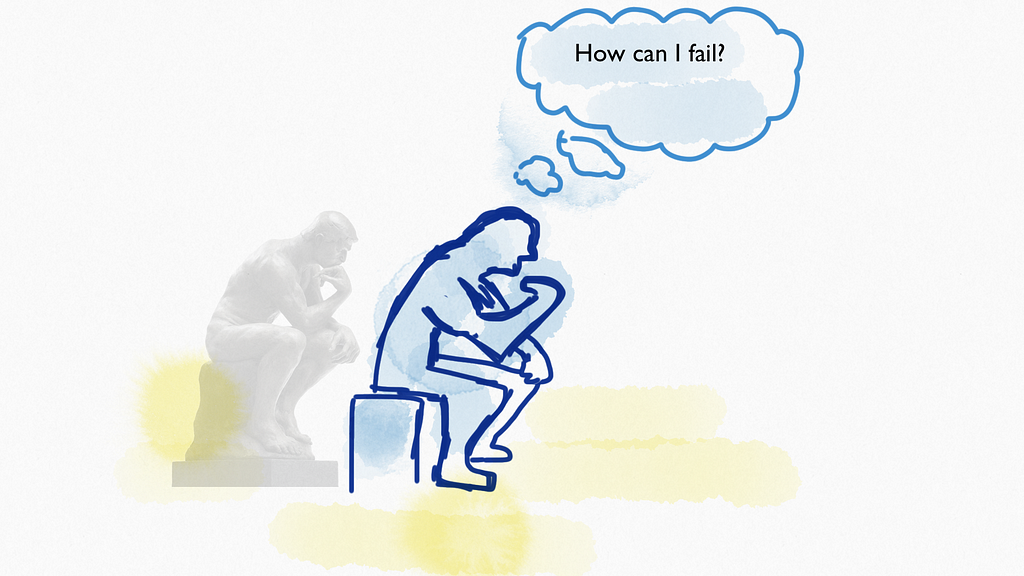 Seek for disconfirming evidence instead of confirming evidence
Seek for disconfirming evidence instead of confirming evidence
Work smarter, not harder
Creating a scenario where idea already became the reality makes you think about the details that would otherwise be forgotten. Each step of the scenario makes you closer to the conclusion about whether or not you should invest your time in the execution. Creating a scenario requires very little time so you won't have enough time to develop an emotional involvement and your decisions will be objective. The scenario template which I use has four main topics which have to be addressed:
- customers,
- solutions,
- day before and
- day after.
Keep in mind — you have to be brutally honest with yourself.
1. Customers
First of all, you have to know who are your potential customers. When I say customers, I'm referring to the user, the technical buyer and the economic buyer. Depending on the product or service, these roles can be a single person (in B2C) or several persons or even organizations (B2B).
Users will have their hands on your product. They are the ones which have to be delighted with your product. Do a little research on what they like and need. Take into account their age, education, habits and preferences.
Requirement: Your product has to make life easier for the user.
Technical buyer is usually a department manager (in B2B business models). Technical buyer has to be persuaded that the product is required and that it will improve the business or user's satisfaction. Benefits of this purchase has to be communicated loud and clear to this user.
Requirement: The product has to have a clear benefit for the targeted department.
Economic buyer is an instance with the money bag. This person is paying for the product. The price should be within the buying power of the targeted group. If you nailed previous two aspects, the user and the technical buyer will persuade the economic buyer to approve the purchase if the core values of the product are right for them.
Requirement: There has to be a compelling reason to buy and clear return on investment.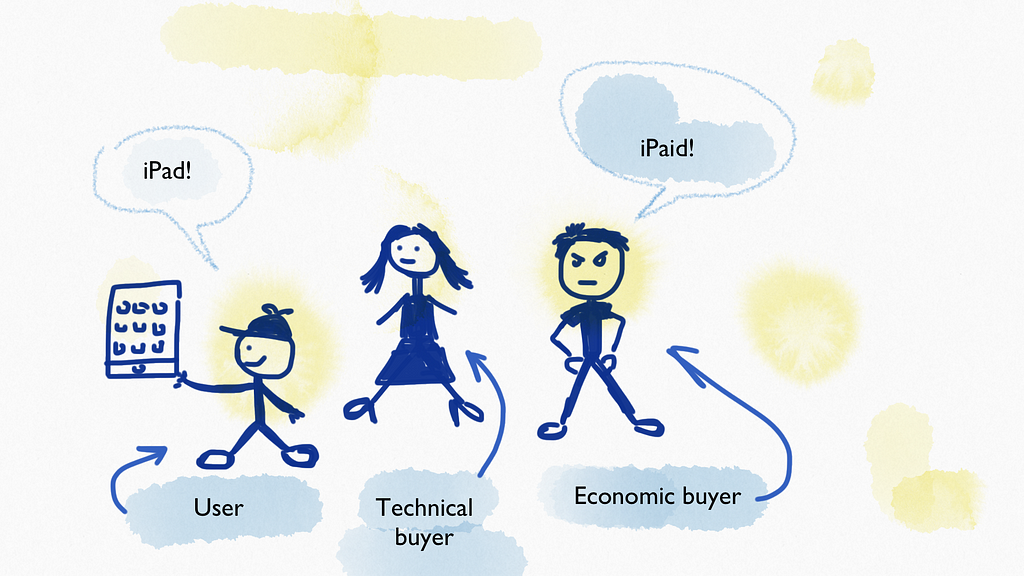 Customer categories2. Solutions
Customer categories2. Solutions
Clearly, you have to offer a solution to a certain problem. If you touch a pain point with your solution, you've hit a jackpot. Just make sure that the user understands how does the product help them overcome that pain point.
Requirement: Detect the needs of the user. Address the needs as a combination of their goals and pain points. Help them achieve their goals by overcoming the pain points.
If you're not solving any problems, your product has to have some kind of incentives for the users. These incentives can be either money (e.g. Bitcoin) or dopamine (addictive apps like Instagram). A combination of two is sweet…
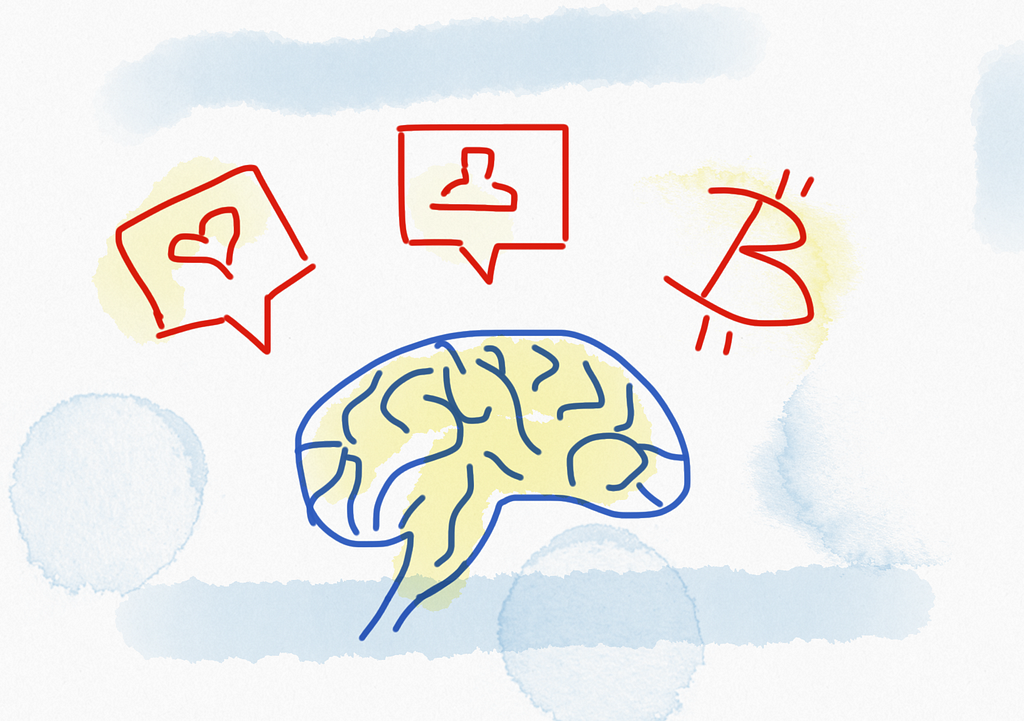 Product incentives — dopamine and money3. Day before
Product incentives — dopamine and money3. Day before
Now that you've identified your customers, imagine a scene or a situation where they would need your product. How do the users deal with the problems today and what is the problem in the first place?
I like to use this cheat-sheet to figure out how the user deals with the specific task to date, without my product. Take a pen and a piece of paper and fill in the blanks:
Scene or situation: _________________
Imagine a day in life of the user, and imagine the scene where your product would have an impact on users' behaviour.
Desired outcome: ___________________
Almost every action starts with forming a goal and intention. These are the first two steps of the seven stages of action. Try figuring out what are the users' intentions and desired outcomes. This is very important because you want to be helpful with your product, and help the users in reaching their goals 10x faster or easier. And the first thing you have to figure out is what are their expectations and desired outcomes of the action.
Attended approach: _________________
After forming a goal, natural step forward is to specify and execute an action toward the goal. Figure out what is the attended approach of the user. Write down each step that the user has to take in order to reach the desired outcome. Count the required steps. Imagine Use these steps to identify pain point in the current process. This is where you should improve.
Interfering factors: __________________
What are the interfering factors in these steps? Are they preventing the user to achieve the goal? Use your pain-in-the-ass-o-meter and measure how frustrated is the user with the current approach. If the meter shows high values, it's a good sign because if the frustration in high, so is the willingness to change and use something else. If there are no interfering factors, then you should ask yourself why would the user change the current approach which he got used to.
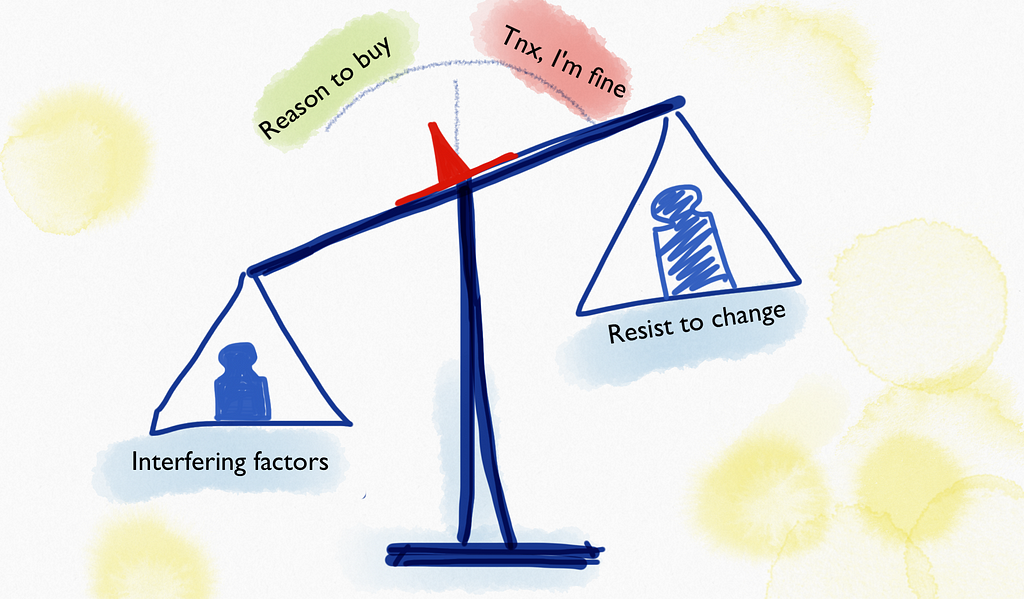 If interfering factors are intensive (heavy), then the resist to change will be relatively lower and the user will have a compelling reason to buy.Economic consequences: _________________
If interfering factors are intensive (heavy), then the resist to change will be relatively lower and the user will have a compelling reason to buy.Economic consequences: _________________
If these interfering factors prevent the user from reaching the goal or delaying the process, think about the economic consequences. If these consequences are significant, you have a good chance of persuading the economic buyer to buy your product because you will save them money. Simple. Don't worry if there are no economic consequences, high level of frustration will do the trick just fine.
4. Day after
Great, you've figured out the desired outcome, intended approach and interfering factors. Now you can envision how will your product help. How will you address these issues that the user has today? How will you make their lives easier?
Again, fill in the blanks:
New approach: ___________________
Having in mind all the pain points of the user in their current approach, offer a better solution. The new approach can have fewer steps, better overall experience, a shortcut to the end goal, etc. Basically, just write down what you can offer to the user as a better solution.
Enabling factors: ___________________
Write down what are the enabling factors that your solution offer to the user. Emphasise the interfering factors that the user has today, just to remind them. This will make your enabling factors look even more appealing.
Economic rewards: _________________
If your product really helps, it has to have some economic rewards. Speeding-up the process of achieving the goal can be just enough to make an incremental economic reward. Ten X improvement can make you rich by making other people rich.
Conclusion
Now that you filled-in all the blanks from this template, review your assessment of the idea. The feasibility of the idea boils down to three things:
- Is there a market with enough buying power?
2. Is there a big pain-point in the current approach?
3. Am I offering a better solution?
Three positive answers will give you a GO on the idea. If one of the answers to these questions is a NO, than you should reconsider if you should move forward with the idea.
This article is highly influenced by Geoffrey More’s book — Crossing The Chasm. Also, I think that this approach to idea validation is a great addition to Jake Knapp's — Sprint, because it focuses more on the customers and economic feasibility. These two books are one hell of a combo for every industry seeking innovation. Mastering the skills in these two books will most certainly make you a superhero.
Let me know what you think about this approach and how you deal with the confirmation bias. I hope this was helpful.
How to validate an idea before you get emotionally attached to it? was originally published in Hacker Noon on Medium, where people are continuing the conversation by highlighting and responding to this story.
Disclaimer
The views and opinions expressed in this article are solely those of the authors and do not reflect the views of Bitcoin Insider. Every investment and trading move involves risk - this is especially true for cryptocurrencies given their volatility. We strongly advise our readers to conduct their own research when making a decision.